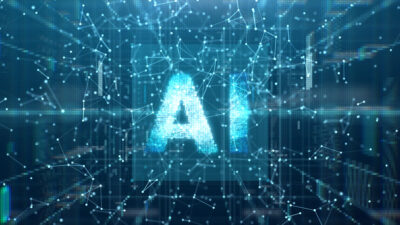Workforce planning has traditionally been a straightforward exercise: determine headcount needs, assess budget constraints, and align staffing with organizational goals. But as artificial intelligence (AI) gains traction in businesses and industries of all kinds, this once linear process is becoming exponentially more complex.
Companies are no longer just planning for staffing needs and roles—they’re mapping work itself.
“Workforce planning in the age of AI is no longer just about headcount planning—it’s about identifying what tasks will best be done by people and what tasks will be assisted or automated by technology,” says Sultan Saidov, CEO of Beamery.
The Pitfalls of AI Adoption
Rather than replacing entire job functions, AI is transforming discrete components of work. This nuanced shift is driving organizations to move beyond job-based or skills-based planning toward a task-based model. In this framework, employers analyze work at a granular level to determine which tasks remain uniquely human and which can be offloaded to machines.
For HR professionals, this paradigm shift demands a reimagined approach. Saidov explains, “Employers aren’t simply scaling back junior hiring; they’re redesigning those roles so AI handles repeatable tasks, and employees contribute higher-value work—insights, collaboration, problem-solving.”
However, the lure of AI-fueled efficiency has also led to hasty decisions. Sarah Doughty, Vice President of Talent Operations at TalentLab, warns that some employers are chasing trends without a grounded understanding of AI’s limitations. “Some employers are scaling back hiring and publicly suggesting that roles can be replaced by AI. But this feels more like trend-chasing than a decision grounded in real evidence that AI can fully replace human jobs,” she says.
Doughty cites the example of AI coding tools. While initially heralded as revolutionary, studies now reveal that up to 40% of AI-generated code contains exploitable security flaws, often requiring more effort to correct than writing the code manually.
“The truth is, AI can’t fully replace any human function in a company—not even junior roles,” Doughty emphasizes.
The Pipeline Challenge: Why Junior Roles Still Matter
This reality poses a critical question for HR: how do we prepare talent for evolving work without prematurely eliminating the very pipeline that feeds future leaders?
Patrice Williams-Lindo, CEO of Career Nomad and a veteran of enterprise workforce transformation, is blunt about the current state. “Let’s cut through the noise: companies aren’t just ‘rethinking’ workforce planning—they’re rewriting the playbook with AI holding the pen,” she says.
According to Williams-Lindo, junior roles are being quietly phased out in favor of AI tools that promise faster outputs. “Job descriptions are now Frankenstein hybrids: ‘Must have three-plus years’ experience and know how to prompt-engineer Midjourney,’” she quips. “Translation? If you were hoping to learn on the job, too bad—the job just got outsourced to a tool that doesn’t take lunch breaks.”
Yet eliminating early-career roles has long-term consequences. “You can’t automate institutional knowledge. You can’t ChatGPT your way to legacy leadership,” Williams-Lindo cautions. The absence of a robust talent pipeline could leave companies vulnerable in the years to come.
Data-Driven Scenario Planning
This concern is echoed by Donncha Carroll, partner and data science leader at Lotis Blue Consulting, who emphasizes the importance of scenario planning. “With more uncertainty about the future, there is a greater emphasis on agility and adaptation,” says Carroll. “In lieu of a crystal ball, leaders must develop strategies based on data and insight to drive change where they need it the most.”
Carroll advocates for integrating scenario planning into strategic operations, using data-driven methods to monitor changes and model workforce needs. “Specifically, leaders need to establish a data-driven process for monitoring, modeling, and scenario planning that continuously translates business strategy into a future mix of work,” he explains.
Indeed, the integration of AI is not about wholesale replacement of humans, but human augmentation. The Federal Reserve Bank of St. Louis reports that generative AI has increased productivity by 33% across sectors such as content creation, market research, and customer service. Still, Carroll warns that this productivity boost is only sustainable if employees are adequately supported to adapt and grow.
This includes developing both technical skills—such as AI literacy and data science—and softer skills like problem-solving and critical thinking.
Building Skills for an AI-Enhanced Future
Carroll stresses, “Many of these can be taught with a combination of instruction and practice, but softer skills are often hard to learn unless employers step in and provide guidance, mentorship and the right set of experiences.”
A human-centric approach is also vital to preserving workplace culture in hybrid and remote environments. Alexandra Suchman, CEO of Barometer XP, highlights how distributed work has eroded the spontaneous interactions that foster trust and engagement. “The serendipitous interactions that foster elements of strong culture (engagement, accountability, and trust) don’t happen naturally in virtual and hybrid environments,” she says.
To counteract this, Suchman recommends structured opportunities for play and team-building. “Playing games and activities together creates shared experiences where colleagues can learn about each other while having a fun shared experience,” she says. These low-stakes environments enable employees to practice collaboration, communication, and adaptability—skills increasingly critical in a technology-enhanced workplace.
As AI continues to reshape the nature of work, HR professionals and people managers must take a proactive and strategic approach to workforce planning. This means:
- Moving from role-based to task-based planning.
- Investing in upskilling and internal mobility.
- Maintaining transparency and ethics in employee communication.
- Using data-driven scenario planning to anticipate shifts.
- Prioritizing human connection and culture in a hybrid world.
“Companies that win in times of rapid change are good at identifying trends and understanding implications for markets, customers, and business operations,” says Carroll. “They make high-probability bets by confidently adjusting their workforce to align enterprise capabilities with future needs.”
For HR leaders, the path forward is not about choosing between people and AI. It’s about designing a workforce strategy where both can thrive—together.
Lin Grensing-Pophal is a Contributing Editor at HR Daily Advisor.

